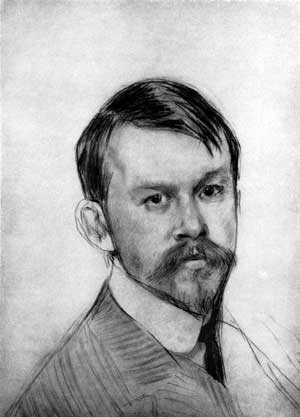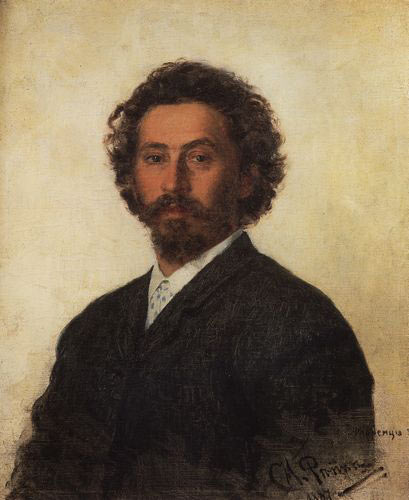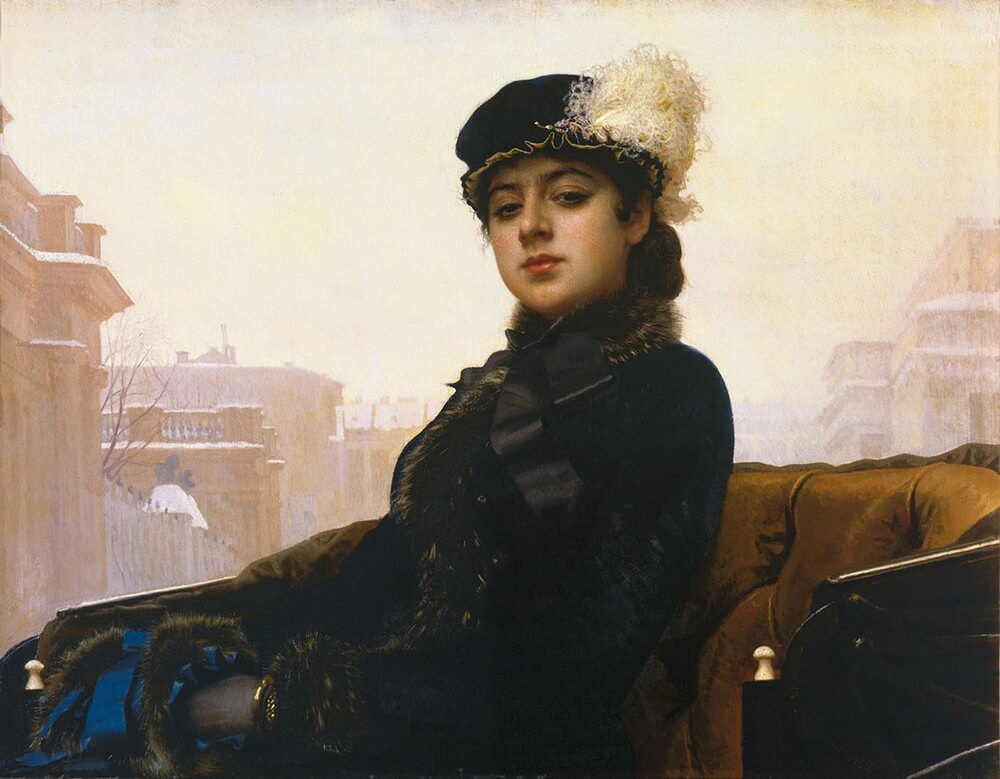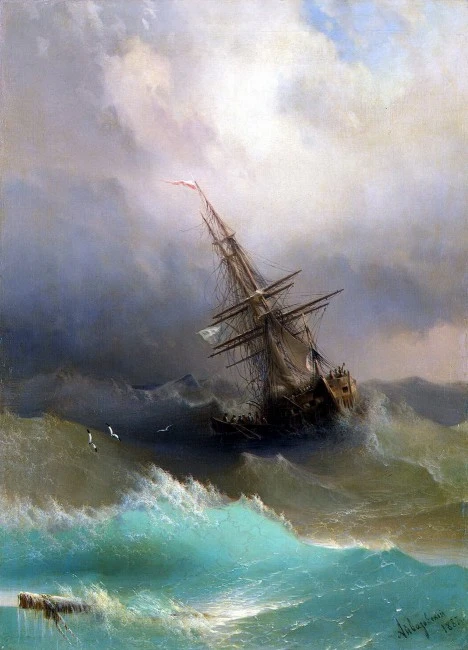The Rape of Europa by Valentin Serov - Painting Description
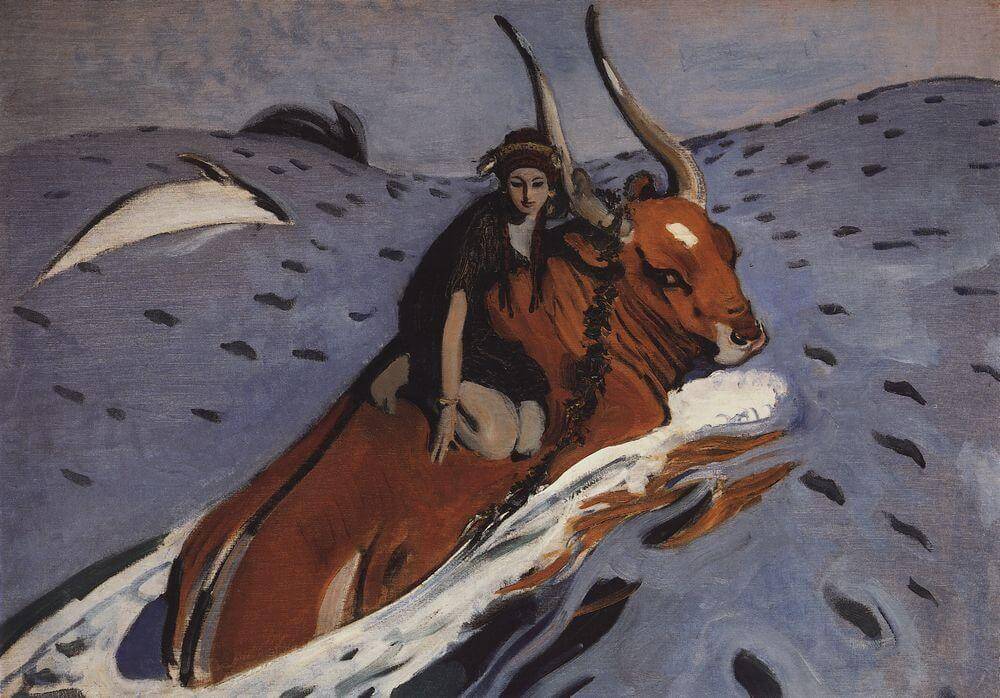
The Rape of Europa - Valentin Alexandrovich Serov. 1910. Tempera on cardboard. 71 x 98
Powerfully cutting through the thick sea, the bull carries away the beauty of Europe. Dolphins frolic, accompanying the heroes. The sky merges with the sea. The waves envelop the strong body of the bull like a king's ermine mantle. Europe is calm and even indifferent.
The work is devoid of minor details. The schematic nature of the images is a tribute to the tradition of modernism. The master carefully creates the image of a bull, adding some human features. We can see the reincarnation of the Olympic god, who fell in love with the beautiful daughter of the Phoenician king.
The combination of brown, blue and black is a classic set of ancient Cretan frescoes. In the meantime, the work is completely devoid of antique static and harmony of forms. We see a plot filled with energy and temperament.
The appearance of Europe is also far from antique samples. The viewer does not see a marble frozen beauty, but rather an ordinary young girl, dark-skinned, of an ordinary physique, and far from ancient harmony.
The symbolic meaning of the plot acquires a special, modern sense in the artist’s eyes. Europe has moved away from the long-term worship of antique samples. What will the voyage end with? Which shore will the bull come to? These questions remain open.
The space of the picture is subject to a special rhythm. Dolphins add dynamics to this composition and emphasize the strength and power of the bull.
The horizon of the work is open. Lazy glare on the waves, and the distorted and just indicated reflection of the characters in the water surface, create a feeling of the power of the elements, its indomitability.
Europe feels confident on the bull, she completely trusts him. The garland, the remains of which got tripped on the horn, no longer looks like decoration. The heroes look back at the viewer, as if inviting him to follow them on their way to unknown.
This work was one of the last works by the author. This is a kind of comprehension of the entire creative path, difficult reflections on the modern world, on its path to the future. The appeal to the antique plot shall not be considered not accidental. The embodiment of a classic plot with new artistic means is the master's creative testament and the attempt to leave a message to the world.
The work is considered one of the most successful, recognizable works of the author, a model of modernist painting. Nowadays, there are about ten different versions of this work known. The author stubbornly searched for the optimal color scheme, made experiments with the space, and improved the images. Each version is distinguished by its artistic sound, atmosphere and coloration.
Comments (0)
Top
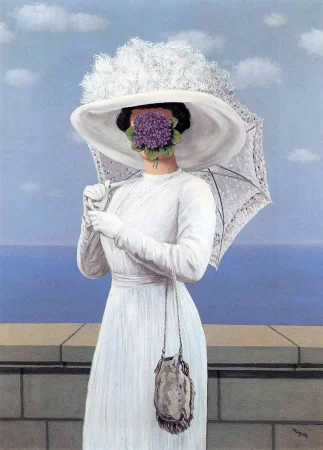 Painting The Great War, Rene Magritte - Meaning and Analysis
Painting The Great War, Rene Magritte - Meaning and Analysis
The Great War - Rene Magritte. Canvas, oil. 81 x 60 cm...
10.10.23
1 086
0
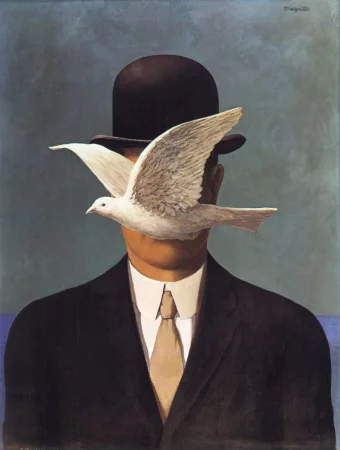 The man in the bowler hat, Rene Magritte
The man in the bowler hat, Rene Magritte
The man in the bowler hat - Rene Magritte. Canvas, oil. 70 x 50 cm...
06.09.23
2 724
0
